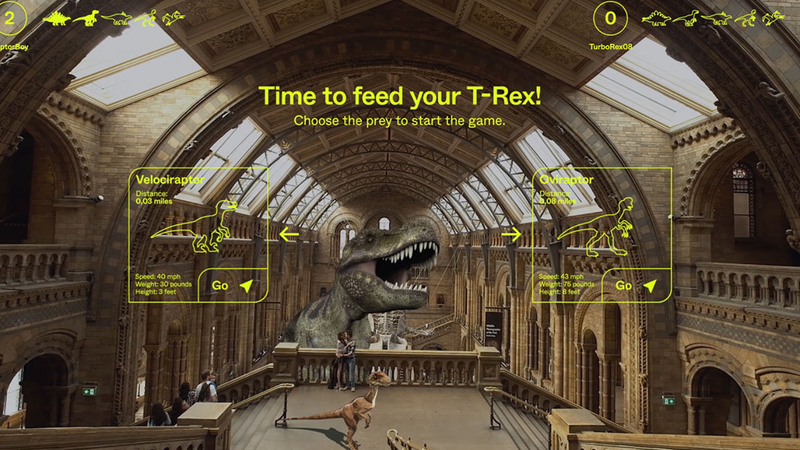Unlocking the Potential of VPS in Augmented Reality
Since its inception augmented and virtual reality has vastly evolved, in part thanks to advancements like Immersal's innovation in visual positioning to enhance AR by outpacing GPS limitations.
In the realm of digital immersive experiences, advancements in VR (Virtual Reality) and AR (Augmented Reality) technologies are rapidly evolving. At the heart of this evolution is Finland-based Immersal, a company that's pioneering in the Visual Positioning System (VPS) domain. Thanks to Immersal's cutting-edge spatial mapping and visual positioning technologies, this innovation is revolutionizing how digital and physical realities merge.
Immersal's VPS was born out of a practical need encountered during an AR project, where the team faced the limitations of existing positioning systems. Their response was to develop a VPS offering centimeter-level accuracy, enabling persistent, shared multiuser AR experiences. They recognized the inadequacies of GPS (Global Positioning Satellites) for AR applications and responded with a VPS that transcends these limitations, enhancing both indoor and outdoor location accuracy and visual mapping. This technological advancement is not just a solution to current challenges but a gateway to unexplored possibilities in augmented reality, paving the way for innovative applications across diverse fields.
What is VPS?
Difference Between GPS and VPS Technologies
The main difference between GPS and VPS is the way they determine location. GPS relies on satellite signals and is designed primarily for outdoor use. It provides global coverage but often with limited accuracy. VPS, in contrast, uses computer vision, cameras, and visual data to determine the precise location and orientation of a device in real-time indoors and outdoors, even underground.
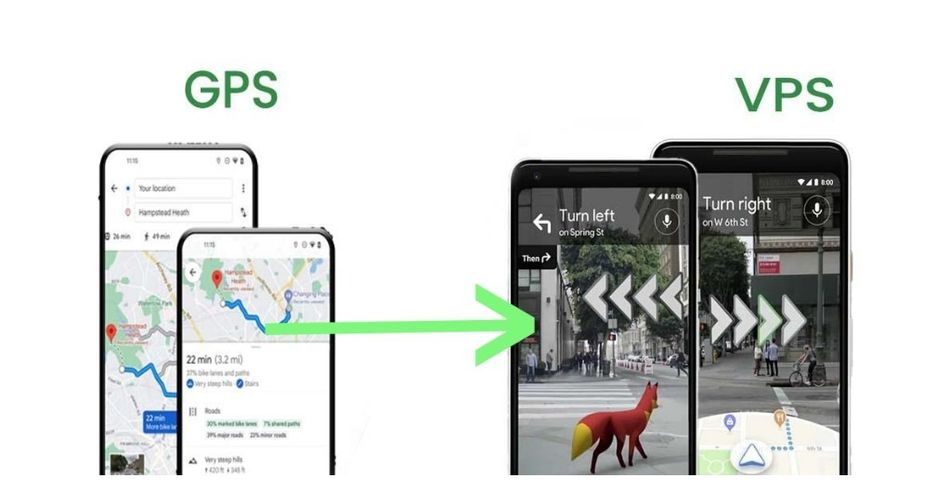
What problems does VPS solve?
VPS solves critical navigation challenges in areas where GPS is limited, such as indoors or in dense urban environments. It enables precise location tracking and orientation within complex structures like malls or office buildings. VPS significantly enhances AR applications by accurately merging digital and physical worlds. This technology also streamlines asset tracking in challenging environments, offering reliable location data where traditional GPS-based solutions are ineffective.
When to use VPS for AR applications
VPS is a viable option for AR applications that require any of the following attributes:
both indoor and outdoor positioning
high-precision positioning
device orientation in addition to position and a full 6 degrees of freedom pose
multi-user, shared AR world
persistent virtual content, objects that are tied to the physical world
The versatility and functionality of VPS makes it an excellent choice for applications such as indoor navigation guides; for example, helping a user locate their airport departure gate. Another use case could be virtual content in an art museum, where the story and history behind an art piece could be tied to the art itself, and brought to life with visually pleasing 3D graphics and spatial audio.
What will you build?
Whether you're building an AR experience for a large commercial space, a factory, or an industrial setting, or even if you'd just like to create an AR app for fun, Immersal is the way to do it.
Immersal has released its SDK 2.0 and new Mapper App.
Sign up for your free account here.
Use Cases of VPS Technology
Some common use cases for VPS include augmented reality-based entertainment and guided navigation at theme parks, fan engagement experiences, urban planning, and robot navigation. Sports fans are also looking forward to more immersive experiences and real-time analytics that can easily be displayed in AR when watching a game at the stadium.
Theme parks
VPS revolutionizes the theme park experience by enhancing navigation and interaction within these expansive, often crowded environments. VPS aids visitors in pinpointing their exact location and navigating efficiently to attractions, reducing the time spent on orientation. It enriches the park experience through AR features, such as interactive guides and virtual queues, blending the digital with the physical for a more immersive visit. Additionally, VPS technology assists park management in crowd control and operational efficiency, ensuring a smoother, more enjoyable experience for all guests.
Industrial Settings
In industrial environments, VPS facilitates accurate indoor navigation, guiding workers through complex facilities like warehouses or manufacturing plants. It enables precise location tracking of machinery, equipment, and inventory, streamlining logistics and inventory management. For maintenance and safety, it provides real-time, site-specific information, helping to identify potential hazards and maintenance needs. Additionally, in AR applications, VPS assists in training and simulations, providing workers with an interactive, detailed view of machinery and processes, thus reducing errors and improving overall operational efficiency.
Wayfinding
VPS can be used in complex indoor environments like shopping malls, airports, and museums by displaying easy-to-follow AR navigation guides to customers. VPS accurately locates visitors and offers augmented reality (AR) navigation to guide them effortlessly to their destinations, a task beyond the capabilities of traditional GPS.
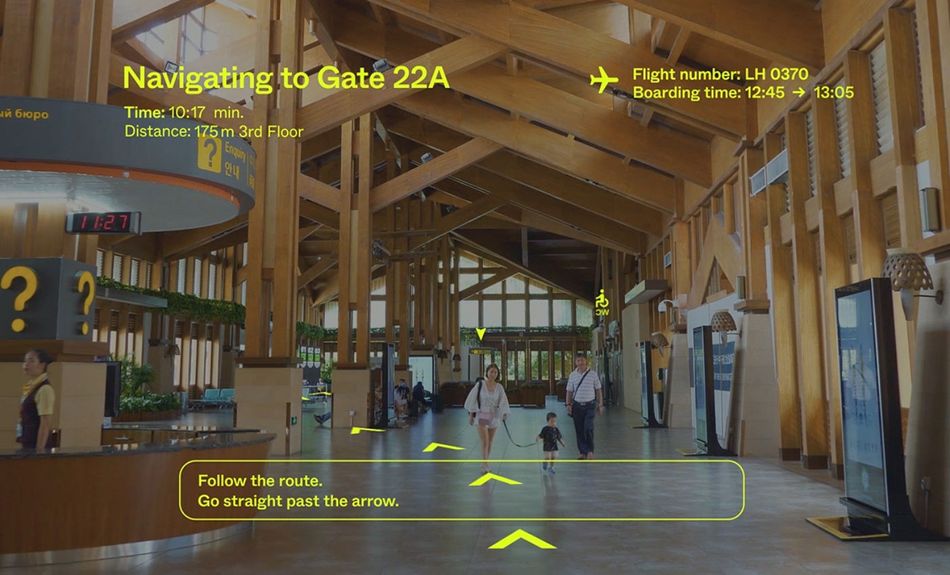
Fan engagement at live events
VPS can elevate fan engagement at live events by providing immersive, interactive experiences. Fans can navigate sprawling event spaces with ease, using AR for real-time directions to seats, amenities, or points of interest. It also enables personalized content delivery, such as AR-enhanced replays and player stats, directly to fans' devices, creating a more engaging and memorable event experience. Beyond the actual game, AR can also be applied to immersive virtual merchandise stores, allowing fans to preview and purchase products virtually, and enhancing the overall shopping experience. Sponsorships, half-time ads, and bringing mascots to life are a few other opportunities to elevate the in-stadium fan experience with VPS-based AR.
Urban planning
VPS offers transformative capabilities in urban planning by enabling precise mapping and analysis of city landscapes. Planners can use VPS to visualize proposed developments in real-time, overlaying AR models onto existing urban environments. This technology aids in assessing the potential impact of new structures on the surrounding area, enhancing decision-making processes. Additionally, it can assist in efficient space utilization and public infrastructure planning, ensuring more accurate and sustainable urban development.
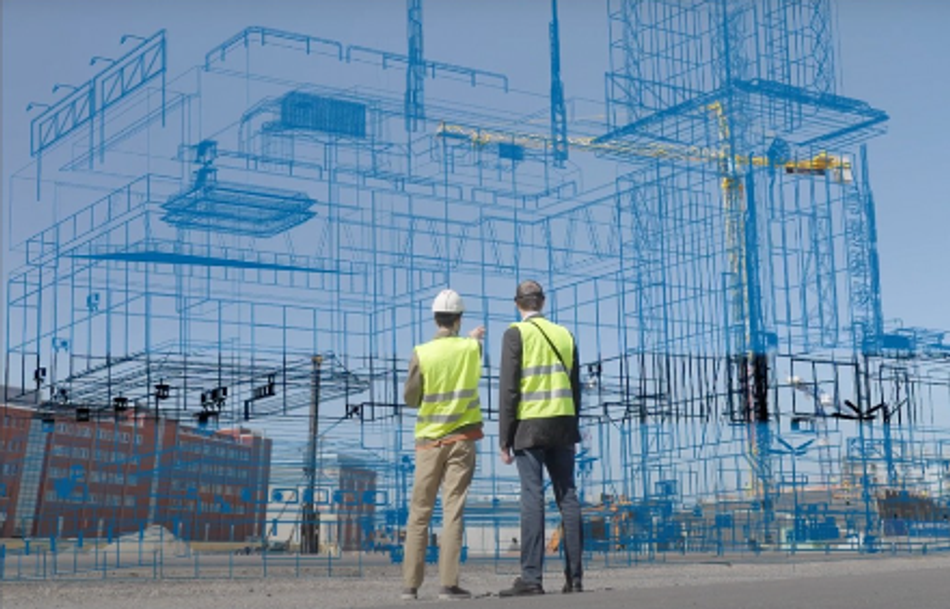
Asset tracking
VPS greatly enhances asset tracking, especially in complex environments like large warehouses or manufacturing plants. By providing precise, real-time location data, it enables companies to monitor and manage the movement of assets effortlessly. This accuracy ensures more efficient inventory management, reduces the likelihood of misplacement, and speeds up retrieval processes. VPS's detailed spatial awareness also aids in optimizing asset layout and logistics, leading to improved operational efficiency and cost savings.
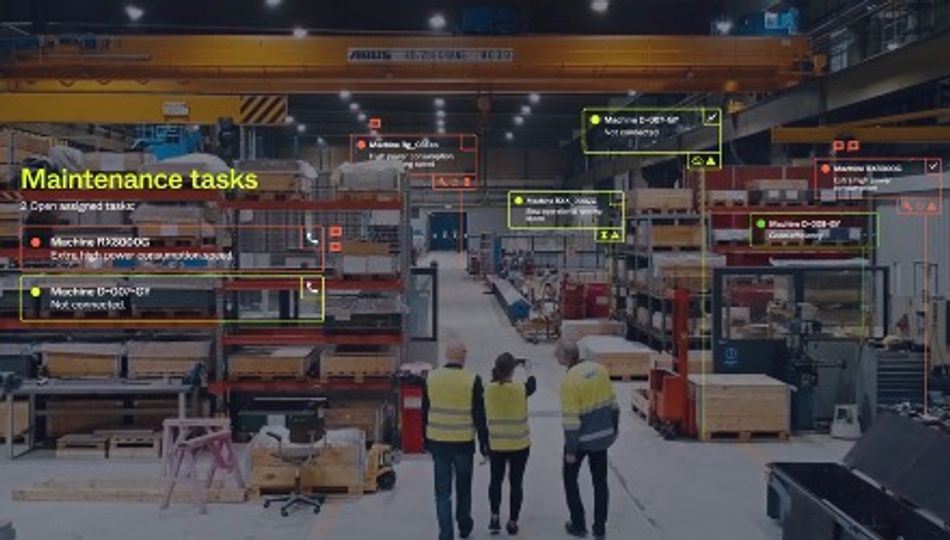
WebAR
VPS significantly boost the capabilities of WebAR, offering a more immersive and accurate augmented reality experience directly through web browsers. VPS enhances WebAR by providing precise spatial awareness and location tracking, allowing for more realistic and contextually relevant AR overlays on physical environments. The combination of VPS with WebAR paves the way for advanced applications in advertising, education, and entertainment, making these experiences more intuitive and seamlessly integrated into the physical world.
Robot navigation
VPS can enhance robot navigation by providing precise location and orientation data, essential for autonomous movement in GPS-challenged environments like indoors or urban areas. This advancement allows robots to navigate efficiently and safely, avoiding obstacles and adapting to changing surroundings which is crucial in industrial warehouses to public spaces and healthcare facilities.
Conclusion
The adoption of Visual Positioning Systems (VPS) in augmented reality marks a significant leap in merging digital and physical realms. Spearheaded by companies like Immersal, VPS transcends GPS limitations by offering unprecedented accuracy in spatial mapping and visual positioning, vital for both indoor and outdoor environments. This technology enhances AR applications across various domains, from improving visitor experiences in theme parks and aiding complex indoor navigation to transforming urban planning and streamlining industrial processes. The integration of VPS in AR is not just an enhancement of current capabilities; it's a gateway to unexplored possibilities, paving the way for a future where augmented reality is seamlessly woven into the fabric of daily life.
What will you build?
Whether you're building an AR experience for a large commercial space, a factory or industrial setting, or even if you'd just like to create an AR app for fun, Immersal is the way to do it.
Immersal has just released their SDK 2.0 and new Mapper App, you can sign up for your free account here.

